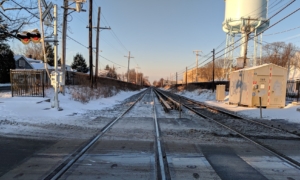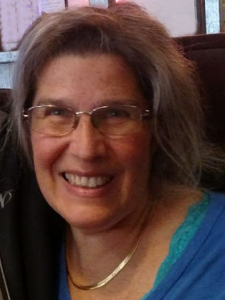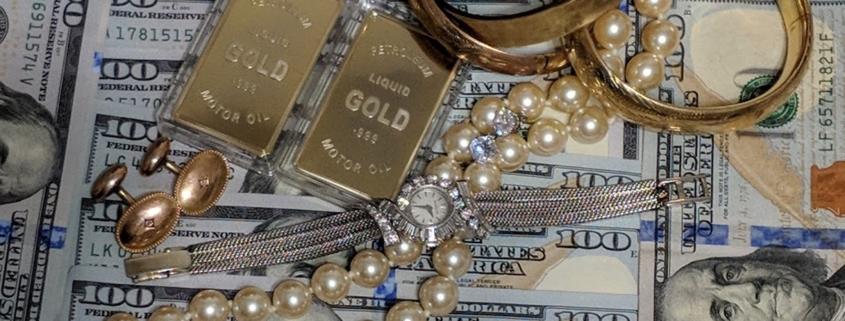Those Who Have and Those Who Don’t
Money flows in the North Shore of Long Island. It flows through the shops along the Miracle Mile. Hermes, Gucci, Prada, Dior. You can see money here, in the tight, trim bodies of Soul Cyclers, in the faces surgically sculpted to stave off time. You can hear it too—in the bright cha-ching of the crisp, quick steps of the scores of men, Brooks Brothers-clad, rushing to catch the early morning train into Manhattan.
Women learn to smile, polished, white smiles and to drive huge SUVs. They learn to play tennis, play bridge, and play not-so-nice with the teachers who don’t give their kids A’s. Kids play lacrosse here,  row crew. They attend Villanova or Cornell and send their resumes off to Goldman or Morgan or Chase, their futures, so carefully, predictably plotted, like bad fiction. Except this is real. This is the North Shore, and it is filled with those who have.
row crew. They attend Villanova or Cornell and send their resumes off to Goldman or Morgan or Chase, their futures, so carefully, predictably plotted, like bad fiction. Except this is real. This is the North Shore, and it is filled with those who have.
There is another Long Island, a short distance away. No railroad tracks separate the two. Instead there are numbers and zip codes, ones for those who have, others for those who don’t. Living in areas in one zip code places you at an average household income of $334,144 [1] , the other at $54,402 [2] . In one zip code, your risk of being the victim of a violent crime is 1 in 1022 [3] , in the other 1 in 138 [4] .
I live in the space between, the middle class, in one of the last middle class neighborhoods left in Nassau County. 11040 is my zip code, an area mixed in age and race and nationality. I can’t say we all blend in, but we are a colorful scene. While I make my home squarely in this middle, I make my living, in each of the other sides.
* * *
I wish affirmative action reached more people. But it’s just a myth we tell ourselves about evening out the score. Affirmative action kicks in only if you make it through your struggling high school (a mere 38 percent of students Hempstead High School in the Long Island zip code 11550) [5] and weather the hurdles of poverty (42.1 percent of children in some sections of 11550 live below the poverty line) [6] – this, in the thirteenth richest county in the country [7] . There is another type of affirmative action, though, one we don’t call by that name. In fact, we don’t name it at all. But it’s there, and it’s powerful, and it keeps the score rigged.
This is the affirmative action for the wealthy. And it wears a different face—mine. I am the high-priced tutor who will come at will, when the paper is due, when the test is tomorrow; I will work with your child to break that 1500 on the SAT; the one who will guide your child through the college essay and help him put his “best self” on the page.
I sometimes feel complicit, another cog in the unjust money wheel. I ask myself if I’ve sold out. I have a master’s degree in social work, for God’s sake. Shouldn’t I use my energies fighting the inequality gap, instead of accepting money to hold it in place? I once was a Pilates queen. I grew up on the low end of the middle class, a child of immigrants and the first generation in my family to get a college education. But in my early 20s, I married my high school sweetheart, who graduated from Harvard Law. We had the house (and a second one upstate). My kids had tutors. Should they not have? What would I have done if there was no Jerry Larkin, our neighborhood tutor, when my son who struggled was in the fourth grade?
I may wear the complicity hat in the evenings and on weekends. But I play both sides of the zip code game. During the school day, I’m a home instructor for those who have not, those in the Hempsteads and the Westburys of Long Island; I teach English to kids on suspension, to teen-aged girls on “maternity leave,” to kids out of school for psychiatric complications. It’s complicated.
We schedule sessions between court dates and doctor visits, and we read Shakespeare and the classics, though the students’ reading levels are often fifth grade. There is nothing more humbling than reading A  Raisin in the Sun with the children of undocumented immigrants, learning of their American dreams—to become veterinarians, fashion designers, immigration attorneys—and nothing more moving than reading To Kill a Mockingbird with Tanya, my student with ebony skin and deep, brown eyes, whose brother sits in prison. Why, she asks, is there no Atticus for him? We sit at her kitchen table on the side closest to the electric heater (the gas company turned off the heat), and we read to the backdrop of the drip, drip, drip, of the water coming in from the hole in her roof through the hole in her ceiling as it hits the side of the bucket placed just inside her front door.
Raisin in the Sun with the children of undocumented immigrants, learning of their American dreams—to become veterinarians, fashion designers, immigration attorneys—and nothing more moving than reading To Kill a Mockingbird with Tanya, my student with ebony skin and deep, brown eyes, whose brother sits in prison. Why, she asks, is there no Atticus for him? We sit at her kitchen table on the side closest to the electric heater (the gas company turned off the heat), and we read to the backdrop of the drip, drip, drip, of the water coming in from the hole in her roof through the hole in her ceiling as it hits the side of the bucket placed just inside her front door.
Later that evening, I will ring the doorbell of a home on the opposite side of town. A brown woman from Honduras or a black one from Jamaica will answer the door and show me to the dining room, where I will take my seat (on one of fourteen chairs) by the light of the chandelier hanging from the ceiling 12 feet above. I am surrounded by leather and luxury, and everything is neatly in place. It is cold outside, but no worries. I feel the warmth rise from the radiant heat under the wide oak planks just below my feet. Alexa, my student, with long blond hair and the greenest of eyes, has been assigned A Raisin in the Sun. The play has a different meaning for her, a meaning no less important and one that I must not minimize. The Youngers offer no recognition but rather spark an awakening, an exposure to a world Alexa has never seen. She is stunned. Later that year, when we tackle Mockingbird, Atticus becomes her new hero. I feel grateful and hopeful and proud.
It would be easy to take the morality stance and blame the families who have, but this issue is not as simple as that. The institutionalization of inequality and racism runs deep in our United States, but the responsibility for its continuation is not as black and white as the demographics these zip codes suggest. Most of my students—both those who have and those who don’t—are creative, compassionate, and kind.
* * *
For now, I continue to ride the middle, complicit as that may be. I continue to teach my heart out between court appointments and keep pushing my most fortunate students to discover their best selves before putting them down on the page. Maybe the study of literature and the practice of writing can help bridge the gap. Bring on those black-ties for the arts. God knows, in this administration we need them.
Maybe some of my kids in 11550 will make it out of that zip code. I have faith that some will come back to help others. And maybe some of my sheltered kids will use their power and opportunity, use the knowledge they will gain from their top tier educations to make the difference, to break free from the scripts that they were handed and muster the courage to change the flow. Two of my own kids are making a life doing just that. Maybe one day 11030 and 11550 will signify nothing more than different postal routes. And maybe the kids from both zip codes will grow up and cure both poverty and privilege and heal our nation’s bodies and souls.
* * *
Author Note: Please take a look at what some kids in high needs NYC schools are doing right now to address the inequality in their education system. The video, telling the kids’ story, was made by three young men of privilege. Let the healing begin!
Fighting Segregation in Our Schools – Ep. 067 – Teens Take Charge
NYC has the most segregated school system in the country, according to a 2014 report by the Civil Rights Project at UCLA.No, we aren’t talking about the 1950s. We are talking about HERE. TODAY. IN OUR CITY.—-Nelson and Whitney are two high school seniors who aren’t afraid to speak out about this issue. They want to reform their city’s schools and they are using their unique talent in Spoken Word poetry to make their voices heard.If you believe in fighting back against segregation, share this video!Huge thanks to Whitney, Nelson, Taylor and the rest of Teens Take Charge NYC for spending some time after school with us!Follow Nowhere Men on Facebook!
Posted by Nowhere Men on Wednesday, January 3, 2018
[1] https://www.neighbohood/scout.com/ny/flowerhil-hill
[2] https://www.point2homes.com/US/Neighborhood/NY/Hempstead-Demographics.html
[3] https://www.neighborhoodscout.com/ny/manhasset/crime
[4] https://www.neighborhood/scout.com/ny/hempstead/crime
[5] https://www.schools.newsday.com/longisland/graduates/gradrates
[6] https://www.neighborhood/scout.com
[7] https://www.worldatlas.com/articles/richest-counties-in-the-united-states.html
 Diane Gottlieb writes both fiction and nonfiction and is currently working on a murder mystery with a social justice bent. She is an MFA candidate at Antioch University Los Angeles and is an assistant editor of creative nonfiction and blogger for Lunch Ticket. Her work has appeared in Panoply and Lunch Ticket. She lives in New York and Florida.
Diane Gottlieb writes both fiction and nonfiction and is currently working on a murder mystery with a social justice bent. She is an MFA candidate at Antioch University Los Angeles and is an assistant editor of creative nonfiction and blogger for Lunch Ticket. Her work has appeared in Panoply and Lunch Ticket. She lives in New York and Florida.





